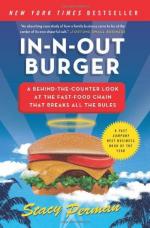|
This section contains 1,295 words (approx. 5 pages at 300 words per page) |

|
All organisms, dead or alive, are potential food sources for other organisms. A caterpillar eats a leaf, a robin eats the caterpillar, a hawk eats the robin. Eventually, the tree and the hawk also die and are consumed by decomposers.
Organisms in an ecological community are related to each other through their dependence on other organisms for food. In a food chain a producer is eaten by a herbivore that is in turn eaten by a carnivore. Eventually, the carnivore dies and is eaten by a decomposer. For example, in a lake, phytoplankton are eaten by zooplankton and zooplankton are eaten by small fish. The small fish are eaten by large fish. The large fish eventually die and decompose. Nothing goes to waste. Food chains are channels for the oneway flow of solar energy captured by photosynthesis through the living components of ecosystems. Food chains are...
|
This section contains 1,295 words (approx. 5 pages at 300 words per page) |

|


